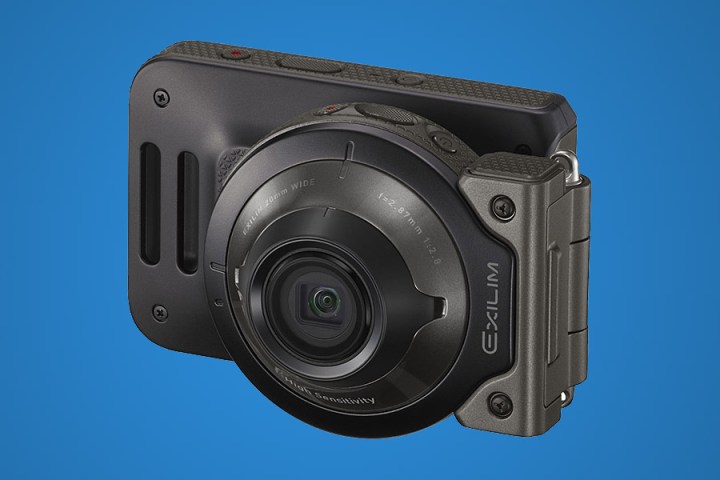
As DSLR manufacturers reach into the 50-megapixel range, why did Casio decided to release this oddball 1.9-megapixel shooter? Both the number of megapixels and the sensor size work together to determine the maximum resolution that a camera can produce. More megapixels means a higher resolution, making it possible to print large images without a loss in quality.
But, upping the number of megapixels has a flipside, which is exactly what Casio is fighting with their new camera. Assuming the sensor size is the same, the more megapixels you add, the smaller they get. Fitting 50 megapixels on a one-inch sensor will make them much tinier than the 1.9 megapixels, or 1.9 million pixels, fit to that same sensor.
Smaller megapixels don’t capture as much light — so by lowering the number of pixels crammed on that sensor, camera manufacturers can improve the low-light capabilities. Casio demonstrated that feature by comparing the camera with another Casio shooter with a more normal megapixel count:
Casio isn’t the first to acknowledge that more megapixels are not always better — like the Sony a7S II with 12 fewer megapixels than the original a7. But, the Casio EX-FR110H may be the most extreme example yet — 1.9 megapixels sounds more like a specification for a kids camera. The camera’s 1.9-megapixel, 1/2.8-inch sensor produces images at a resolution of 1920 x 1080 — about the quality of a still taken from HD video footage. That is enough to print a 5×7 at the recommended 300 dpi resolution, but not much more.
Megapixels aren’t the only thing determining a camera’s performance — the Casio also has a relatively bright f/2.8 lens, though there are brighter options on the market. The ISO, or how sensitive the camera is to light, hits up to 51200. A fixed-focus lens tackles the slow autofocus performance, which is another issue with shooting in limited light.
That low-light capability is wrapped in a rather oddly shaped circular camera with a removable LCD screen. The camera is also sealed against water and dust.
The Casio EX-FR110H’s low megapixels and Asia-only availability will likely give the camera a very narrow market — but it’s at least sparking a conversation on the idea that big megapixel counts don’t always translate into big image quality.




